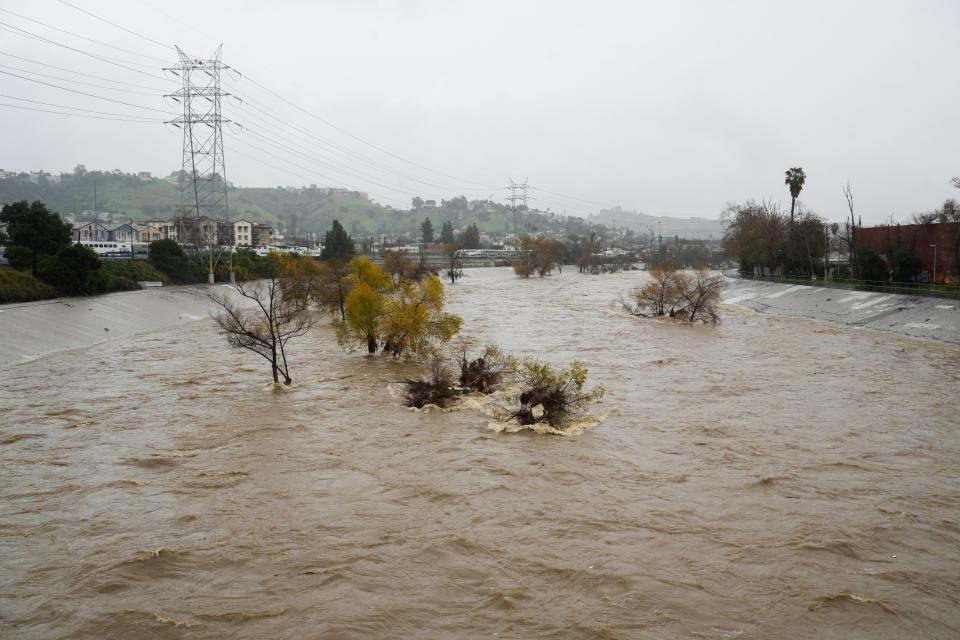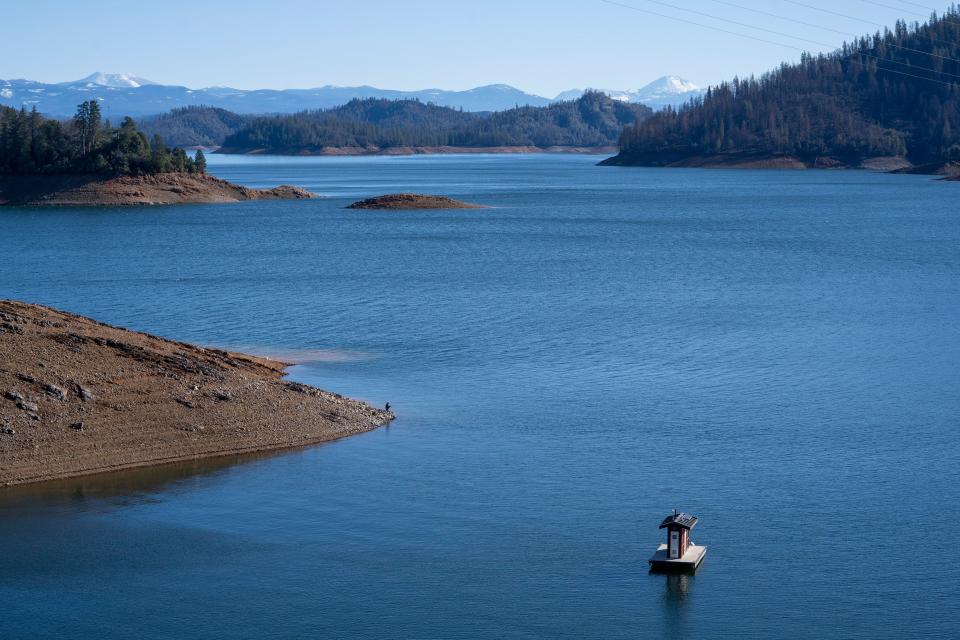
“If it bleeds, it leads.” So goes the old maxim explaining why media outlets focus on the negative.
As an Arizona State University editing professor told me back in the day, traffic flowing smoothly won’t impress readers; it takes a seven-car pileup to do that.
But reporters can carry this pessimistic tendency to excess. When issues can be framed as a “glass half-full,” they’re often cast as “depleted container raises worries about thirst, death, experts say.”
I’ve seen this most recently from our friends in California, especially at the leading Los Angeles daily. For years, the LA Times has focused on the state’s drought with headlines nearly apocalyptic in tone:
-
“A fifth of California water agencies expect drought shortages”
-
“Spring snowpack has shrunk significantly over the last 40 years due to warming”
-
“Heat, drought, floods, bad air: Will California’s Central Valley survive climate change?”
Rain helped end California drought conditions

Thankfully, drought conditions ended in nearly all of the Golden State, thanks in part to a recent dayslong drenching. What a relief!
Well, not for the Times. Their recent headlines include:
-
“The terrifying forces that created a California monster storm”
-
“After 5 days, the rain has stopped. In its wake, 9 dead, a trail of destruction”
-
“L.A. staved off disaster this time. But our luck is running out as extreme weather worsens”
Oh, lighten up, Angelenos. Drought is a drag and the rain helped fixed it. You don’t need to throw a pool party, but at least admit that for now, you no longer need to import drinking water from Fiji.
Besides, puddles are fun to stomp in.
Even better, after soaking our western neighbor, the clouds had enough mojo to deliver rain and snow across our parched state.
Arizona got less rain and is filling reservoirs
According to the Maricopa County Flood Control District, the area has received up to 6 inches of rain so far this year. I even stomped in a puddle or two.
As a result, Salt River Project reservoirs are now 83% full as of press time, a 4% increase from this time last year. And that doesn’t account for the snowpack building up north.
The National Weather Service in Flagstaff reports 45.9 inches of snow in the past two weeks alone. Arizona Snowbowl has received 144 inches this ski season.
This is all great news for Arizona, since our glass is 83% full and could end up overflowing. Although we received less rain than Los Angeles, at least we have reservoirs. Californians might be grumpy because they believe storing water is somehow a bad thing.
For years, California’s leaders have prioritized environmental doomsaying over sound water management. In the Sacramento-San Joaquin River Delta, the keystone of California’s water system, this has allowed billions of gallons to flow into the Pacific Ocean instead of being captured and stored.
California keeps losing space to store water

Ostensibly, this was to protect a 2-inch-long fish named the Delta smelt, though the collapse of the species has continued despite governmental intervention. By not topping off their remaining reservoirs, residents avoid watering their lawns and Central Valley farmers tend to dusty fields.
Instead of reversing this wasteful policy, Gov. Gavin Newsom is looking for new dams to destroy, targeting the Eel River, Ventura River and Malibu Creek.
The last large dam in California was built more than 40 years ago. Voters approved $2.7 billion to create new water storage, but that was a decade ago and nothing has been built.
Any new solutions are liable to be stuck in court for years due to the state’s lawsuit-happy environmental groups.
For California, maybe the reservoir is half-full. Thankfully, Arizona’s leaders have provided several options to keep the rain that falls. As the state grows, more storage will be essential.
Jon Gabriel, a Mesa resident, is editor-in-chief of Ricochet.com and a contributor to The Arizona Republic and azcentral.com. On Twitter: @exjon.
This article originally appeared on Arizona Republic: California’s water glass is half-empty after rain. Arizona’s is full
EMEA Tribune is not involved in this news article, it is taken from our partners and or from the News Agencies. Copyright and Credit go to the News Agencies, email [email protected] Follow our WhatsApp verified Channel









